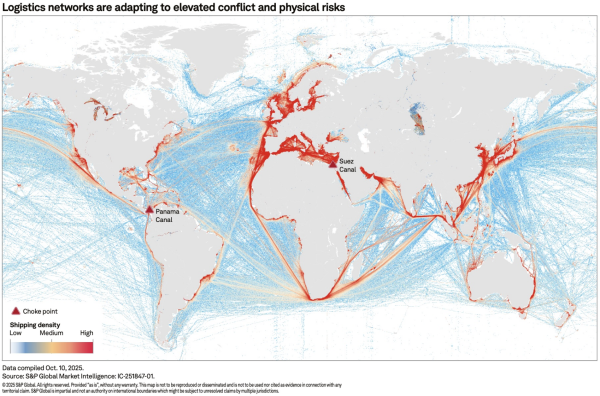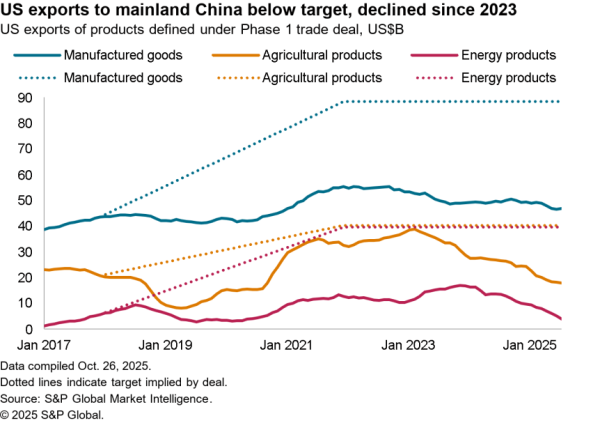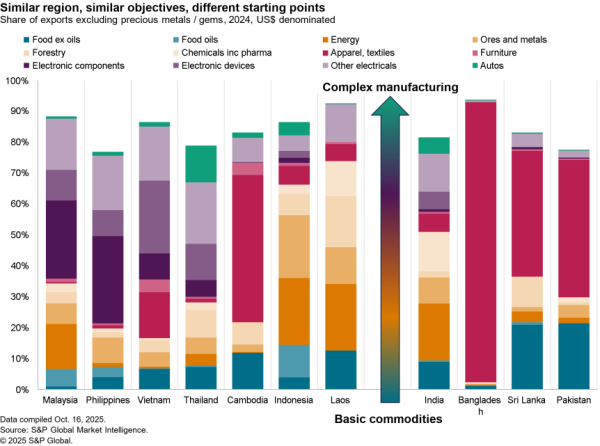The Panjiva Research Outlook series normally focuses on the prospects for trade policy, the state of the logistics industry and developments in industrial supply chain strategy. As we head into Q2 2020 however the spread of SARS-nCoV-2 / COVID-19 (“coronavirus”) casts a shadow over all political and economic developments.
This report draws on key lessons from the coronavirus spread so far from more than 90 Panjiva research reports and extends them to issues to consider for the coming months in terms of trade activity, the healthcare industry, industrial supply chains, logistics operations, and trade policy.
Through a lens, darkly – corporates struggle to determine the COVID-19 path ahead
A significant feature of the COVID-19 outbreak have been the epidemiological uncertainties which when combined with varying rates and approach of governments to tackling the pandemic has made business planning – and specifically supply chain actions – extremely complex.
From a financial perspective that’s led companies to withdraw their guidance estimates at record rates. Panjiva’s analysis of company financial filings, retrieved via S&P Global XpressFeedTM shows that 407 companies in tracked by CapitalIQ withdrew guidance in March – defined as an ‘unusual event – in March 2020, bringing the total for Q1 to 427. New SEC advice also means that firms can also delay their earnings releases, reducing near-term visibility even for firms that don’t withdraw their guidance.
Among international trade-exposed companies there’s been guidance withdrawals from logistics firms including Maersk and Wallenius Wilhelmsen, chemicals firms such as Lenzing and capital equipment firms ranging from Deere to Konecranes.
In the absence of company guidance, investors and other business decision makers will need to rely more than ever on alternative datasets including Panjiva’s international trade data.

Source: Panjiva
Lockdown impact foreshadowed – Shipping from China drops as a result of initial outbreak
The defining feature of the first quarter of 2020 was the initial outbreak of COVID-19 in China, leading to widespread industrial disruptions. The signs of that can be seen in a collapse in U.S. seaborne imports from China with a 38.5% year over year slump in the first three weeks of March compared to a year earlier, Panjiva’s data shows.
That decline alone drove an 11.7% drop in total U.S. seaborne imports over the same period as a rise in supplies from other countries couldn’t offset the shortfall. Imports from Vietnam surged 25.5% higher. That continues a trend seen throughout the past two years which has resulted from U.S. buyers attempting to avoid tariff costs by purchasing from Vietnam.
There’s also been an uptick in imports from Taiwan of 17.4% year over year, reversing a slide seen in the prior two months and potentially due to a less extreme outbreak reported by the South China Morning Post. Shipments from India already reversed earlier improvements to return a 6.5% slide – a situation which may worsen in April and beyond as the national lockdown in India takes a hold.
U.S. imports from Europe have been in a downturn for several months already. In the first three weeks of March there was a 9.9% slide in shipments from Italy, where the disruption has been among the worst in Europe, alongside a 7.1% slide in imports from Germany.

Source: Panjiva
The Bullwhip Effect – demand drops just as supplies return and vice versa
While there are signs that the Chinese economy is returning to normal – though still running at below average capacity on the basis of business sentiment – there are also signs that demand from other countries is in decline. The so-called bullwhip effect could result in continuous disruptions up and down supply chains for several months until all lockdowns are removed.
The China National Textile and Apparel Council has stated that as of the March 25 to April 1 period there were 98.4% of its member firms reporting normal operations. Yet, there’s already been a drop in export orders – which come mostly from overseas – with only 9.0% of firms seeing orders over 80% of normal while 61.2% have orders below 50% of normal.
The seasonal nature of the apparel industry means there is a peak in shipments delivered into the U.S. in July through October. That leaves little time for demand and orders to pick up before Chinese factories need to prepare for the peak.
U.S. apparel imports had already been under pressure as a result of the application of tariffs under list 4A of the section 301 process against China, resulting in a 14.3% year over year slide in shipments in the Q4 2019. That rate accelerated to 45.4% in the first three weeks of March versus the same period a year earlier.
Most of the major U.S. retail importers slashed their shipments both in response to tariffs and more recently due to a lack of availability. Imports linked with JCPenney fell by among the fastest with an 87.23% year over year slide in March while Target, Walmart and H&M all fell at rates of between 50% and 55% over the same period.

Source: Panjiva
Logistics – It takes the right stuff to get to the right place
A shortage of containers to ship may prove to be the least of the logistics’ industries worries during Q2. The relatively robust nature of container-rates in Q1 showed the effectiveness of container-liners capacity reduction plans via “blank sailings”. A similar process is now being extended to Asia-Europe lanes in response to the lockdowns and associated loss of demand being seen in Europe.
Most of the container alliances, most recently including THE Alliance led by ONE and Hapag-Lloyd, have cut as much as a fifth from their sailings for April. THE has also warned it may need to make “further, structural changes to our 2020 product” in due course.
There are a slew of technical issues emerging that have neither simple answers nor a short path to recovery. The earlier drop in exports from China has led to a shortage of empty containers for re-export where manufacturing has continued.
Reduced staffing is a real risk. While logistics employees are deemed essential by most countries, there’s already an emerging shortage of truck drivers in India that has led to a delay in deliveries to / from ports, Lloyds List reports. Furthermore, sailors are at risk from sickness with Maersk and CMA-CGM already facing such challenges while some countries are proving unwilling to allow crew changes without quarantine requirements.
A build-up of undelivered cargo at arrival ports is a possibility already, which can lead to increased charges from ports for freight handlers. That led container-line MSC to offer a “Suspension of Transit” product with products due to be held at transshipment hubs rather than immediately delivered.
Panjiva’s data shows the largest U.S. non-logistics importers using MSC’s services into west coast U.S. ports from China – the first likely bottleneck to emerge – in 2019 included retailers such as Walmart with 15,500 TEUs linked to the firm and Best Buy with 3,800 TEUs. Among manufacturers MSC handled 6,200 TEUs of products linked to Newell Brands’ Sunbeam, 3,600 TEUs for toymaker Mattel and 3,400 TEUs for home appliance manufacturer Bissell.

Source: Panjiva
In a similar move, CMA-CGM’s APL will dray off shipments into the U.S. to its own container yards to reduce fees for its customers, Journal of Commerce reports. Other container-lines will need to decide whether to follow suit or look for their own innovative solutions.
Airfreight is facing a subtler set of challenges. On the one hand the removal of passenger air travel initially reduced the available capacity of international freight capacity by 4.4% year over year in February. That’s led to a surge in air freight rates with Pacific Air’s Chairman, Anthony Lau, stating that charter rates for a B747 from Hong Kong to Europe have risen to as much as $800,000 from $300,000 in February, Bloomberg reports.
The decision by airlines to run passenger jets purely as freighters should return some capacity to the system. Furthermore the reduction in demand flagged above may lead firms that traditionally use air cargo to consider using seaborne freight to reduce costs and extend delivery schedules.
In the meantime freight forwarders are already reviewing their terms of service to reduce the impact of sea- and airfreight disruptions on their profitability. FedEx has introduced a surcharge for higher transit costs. Both FedEx and UPS meanwhile have removed or reduced their service guarantees.
Panjiva’s data shows that the largest users of FedEx’s U.S. seaborne, inbound services in 2019 who may switch to sea from airfreight in the electronics sector included distributor UFP International with Wistron with 673 shipments linked to the firm and Apple with 626 shipments. FedEx may also be exposed to challenges in the retail sector having handled 574 shipments for Urban Outfitters.
A more extreme route, followed by both Deutsche Post’s DHL Forwarding and CMA-CGM’s Ceva Logistics has been to declare force majeure on their shipping contracts. Users of their services face a difficult choice as to whether to find new forwarders or put in place further contingency plans.

Source: Panjiva
Healthcare – Medical hoarding may just be getting started
With infection rates still increasing at the start of Q2, the most pressing concern for most governments lies in securing healthcare supplies including pharmaceuticals, personal protective equipment (PPE) and ventilators among others. While many countries, including the U.S. and U.K., are cutting import duties and other regulations to encourage imports there’s also a widespread set of export restrictions put in place. Those may persist in Q2 despite a G20 push to minimize such actions.
U.S. imports of medical supplies fell in the first three weeks with ventilators down by 33.5% and PPE falling by 35.5% on average. While pharmaceuticals have seen a more modest decline of just 3.5%, that’s been supported by increased shipments from India which now faces a lockdown which could disrupt both manufacturing and logistics. Additionally, the logistics challenges flagged above are acting as a drag on the pharmaceutical sector, the Wall Street Journal reports.

Source: Panjiva
Trade policy – most deals can stay on pause, Brexit needs addressing urgently
Negotiating trade deals has hardly been front-of-mind for governments since the coronavirus outbreak got underway. Going into Q2 many trade negotiations are either in suspension or running slow as participants attempt to negotiate without the usual back-room discussions.
In North America there’s already been a delay in the implementation of the U.S.-Mexico-Canada Agreement (USMCA) to at least July 1 from June 1, CBC reports. Each country needs to implement all regulations three months before it comes into force. While reducing the pressure on industries including autos to implement required supply chain changes, it does nonetheless introduce uncertainty for mid-term planning.
Wider trade deals that are at an earlier stage of development, including discussions with the EU, United Kingdom, Kenya and India, are unlikely to make significant progress during Q2.
The other major trade policy area for the U.S. before the COVID-19 outbreak was the trade war with China. The phase 1 trade deal, which centered on significant purchase commitments from China with only minimal tariff concessions from the U.S., came into effect from mid-February.
Panjiva’s analysis shows that there were no signs of early purchases on the basis of U.S. exports. U.S. exports of the 548 product lines shows that shipments were worth just $4.43 billion in February. That was 18.4% lower than a year earlier and 62.8% below the level implied by China’s purchasing commitment to increase imports by $63.9 billion in 2020 compared to 2017. An absence of significant shipments of LNG, oil and soybeans are the main culprits for the downturn.
A significant acceleration may prove challenging given the disruptions to supply chains being caused by the coronavirus outbreak in the U.S. even if Chinese demand is returning to normal.

Source: Panjiva
Trade deals can be negotiated remotely, but the complexity of multi-party deals – such as the Regional Comprehensive Economic Partnership, or RCEP – makes in-person meetings more effective. There may be some movement in the expansion of the CPTPP deal which is centered on Japan but also includes Canada and Mexico among others.
Japan is reportedly seeking to restart the process of expanding CPTPP to include 11 other members in August, the Financial Times reports. CPTPP can be seen as a counterweight to the China-led RCEP, bringing an overlay of geopolitics to proceedings even if the two are not mutually exclusive.
The biggest outstanding trade deal piece of business that needs to be addressed globally in Q2 though are negotiations between the U.K. and EU. If the U.K. does not request an extension to the transition period by the end of June then it runs the risk of the current customs and trade arrangements ending without a replacement other than WTO rules. As lagged in Panjiva’s research of March 11, talks were already struggling even ahead of widespread lock-downs.
That could prove particularly important in the medical sector. The EU accounted for 80.9% of British medicinal & pharmaceutical products imports in 2019 and 48.9% of its imports of scientific equipment, Panjiva’s analysis of official data shows. British imports of pharmaceuticals from the EU fell by 5.2% year over year in Q4 and slumped 20.9% in January while scientific device imports fell 0.4% in Q4 and 4.4% in January.

Source: Panjiva




